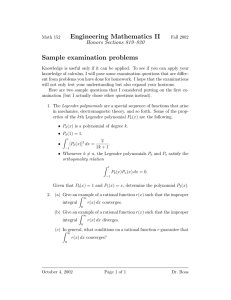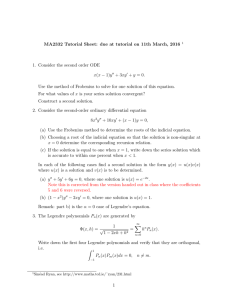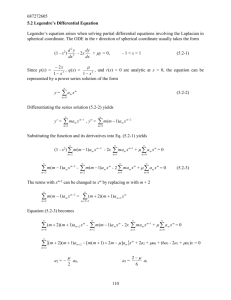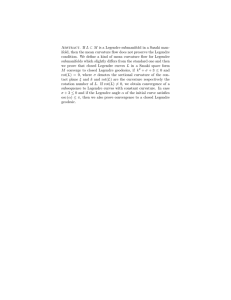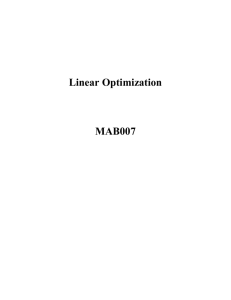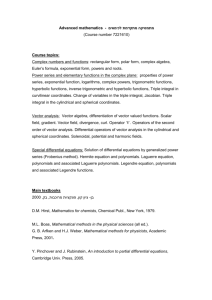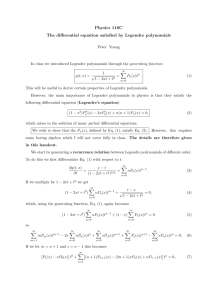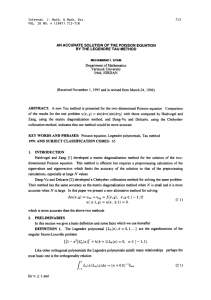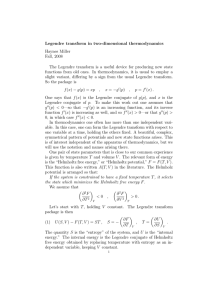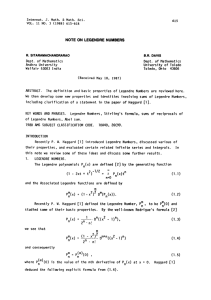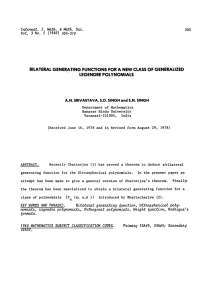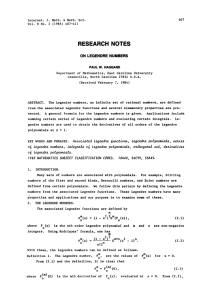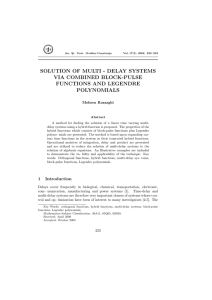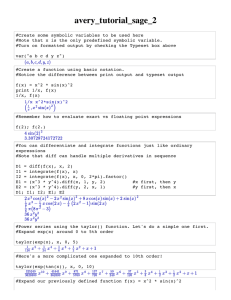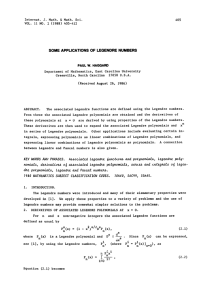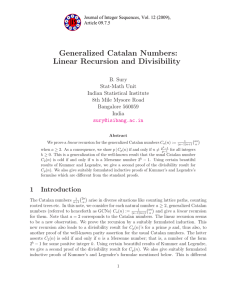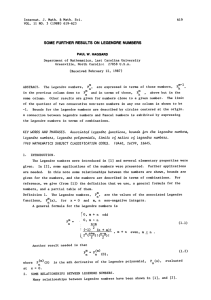PHGN311 Homework #13 (last one!) Due Thursday, Dec. 5, 2013 by
advertisement
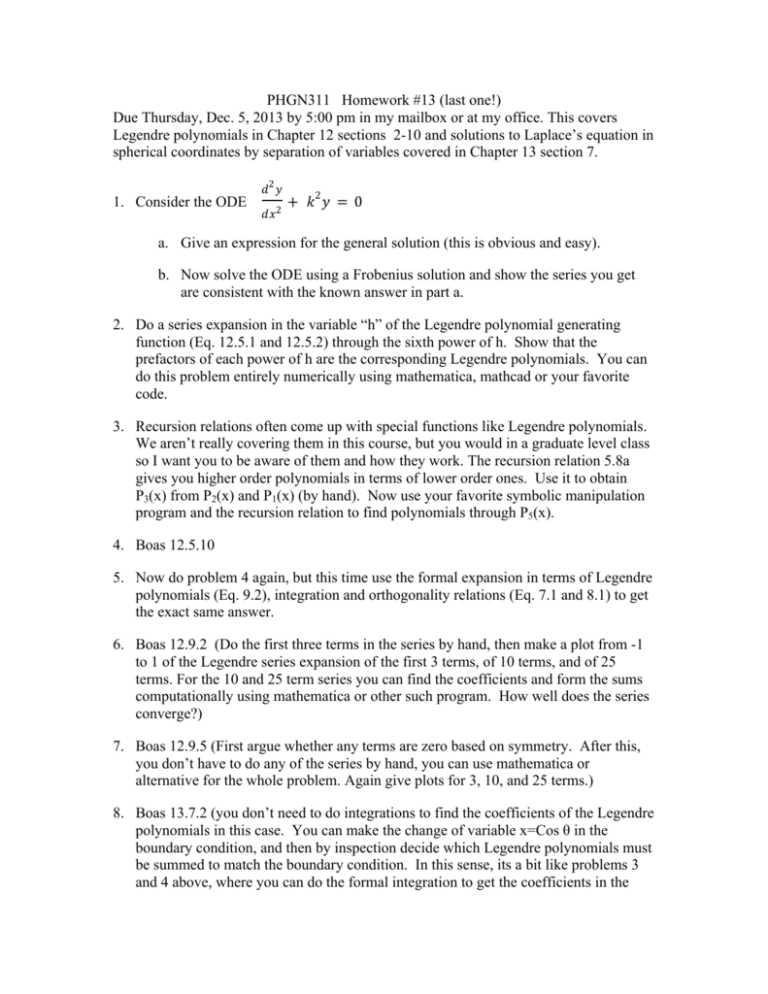
PHGN311 Homework #13 (last one!) Due Thursday, Dec. 5, 2013 by 5:00 pm in my mailbox or at my office. This covers Legendre polynomials in Chapter 12 sections 2-10 and solutions to Laplace’s equation in spherical coordinates by separation of variables covered in Chapter 13 section 7. 1. Consider the ODE 𝑑2 𝑦 𝑑𝑥 2 2 + 𝑘 𝑦 = 0 a. Give an expression for the general solution (this is obvious and easy). b. Now solve the ODE using a Frobenius solution and show the series you get are consistent with the known answer in part a. 2. Do a series expansion in the variable “h” of the Legendre polynomial generating function (Eq. 12.5.1 and 12.5.2) through the sixth power of h. Show that the prefactors of each power of h are the corresponding Legendre polynomials. You can do this problem entirely numerically using mathematica, mathcad or your favorite code. 3. Recursion relations often come up with special functions like Legendre polynomials. We aren’t really covering them in this course, but you would in a graduate level class so I want you to be aware of them and how they work. The recursion relation 5.8a gives you higher order polynomials in terms of lower order ones. Use it to obtain P3(x) from P2(x) and P1(x) (by hand). Now use your favorite symbolic manipulation program and the recursion relation to find polynomials through P5(x). 4. Boas 12.5.10 5. Now do problem 4 again, but this time use the formal expansion in terms of Legendre polynomials (Eq. 9.2), integration and orthogonality relations (Eq. 7.1 and 8.1) to get the exact same answer. 6. Boas 12.9.2 (Do the first three terms in the series by hand, then make a plot from -1 to 1 of the Legendre series expansion of the first 3 terms, of 10 terms, and of 25 terms. For the 10 and 25 term series you can find the coefficients and form the sums computationally using mathematica or other such program. How well does the series converge?) 7. Boas 12.9.5 (First argue whether any terms are zero based on symmetry. After this, you don’t have to do any of the series by hand, you can use mathematica or alternative for the whole problem. Again give plots for 3, 10, and 25 terms.) 8. Boas 13.7.2 (you don’t need to do integrations to find the coefficients of the Legendre polynomials in this case. You can make the change of variable x=Cos θ in the boundary condition, and then by inspection decide which Legendre polynomials must be summed to match the boundary condition. In this sense, its a bit like problems 3 and 4 above, where you can do the formal integration to get the coefficients in the Legendre series as in 4, or you can just identify which terms have to be there to sum to the desired polynomial as in 3). 9. Boas 13.7.7 (You should recognize you have already done much of this one in problem 6 above. Just give the form of the solution through 5 or so terms, and you can use mathematica or equivalent to obtain the coefficients in the Legendre polynomial expansion.)
